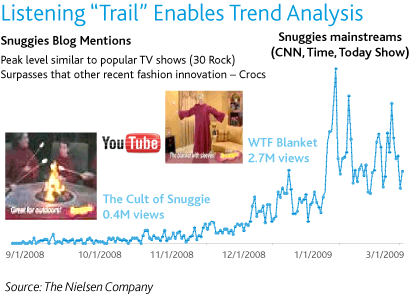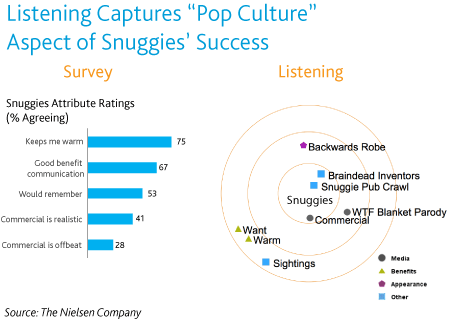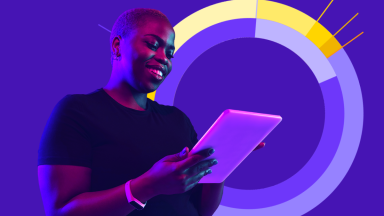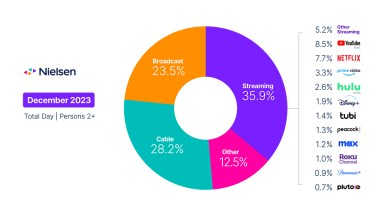
David Wiesenfeld, VP, Insights and Innovation, The Nielsen Company; Kristin Bush, Consumer & Market Knowledge Senior Manager, Procter & Gamble; and Ronjan Sikdar, Senior Research Analyst, The Nielsen Company
SUMMARY: The emerging practice of listening online allows marketers to observe naturally-occurring conversations between consumers about products, brands and companies. It’s no surprise that a technique anchored in actual conversations captures context and emotion better than traditional methods. What is surprising is that listening can be essential to finding the real story. In such cases, it may be more correct to think of traditional “asking” methods as a complement to listening. The bottom line: both are required to develop an accurate, robust understanding of the marketplace.
| One of the most successful packaged goods brands did a remarkable thing… |
Earlier this year, one of the most successful, well-respected packaged goods brands did a remarkable thing. It listened to its consumers. Tropicana—North America’s largest juice brand—rolled out new packaging for its flagship Pure Premium orange juice line. By all accounts, Tropicana did its homework before implementing this change. Using tried and true research techniques, it asked many consumers a host of questions about the new package design. The answers were analyzed, the design revised. More testing likely followed, and at last, the new package found its way to store shelves.
Then something surprising happened. Tropicana’s switchboard lit up, and its in-box filled with complaints from some of its most loyal consumers. They did not like the new design and they were not shy about expressing the intensity of their dislike. Similar comments about the new package were being posted and circulated on the Internet by other Tropicana loyalists.
Armed with quantitative data supporting the new label, Tropicana might have attributed the outcry to a few diehard extremists – and weathered the storm. But instead, they did something extraordinary: They reversed course and reinstated the old label design. The rationale for this decision is noteworthy:
| “Passion” is an important dimension of consumer opinion… |
“What we didn’t get was the passion this very loyal small group of consumers have. That wasn’t something that came out in the research.”
Neal Campbell, President, Tropicana North America
This statement has powerful implications for market research. It suggests that Tropicana believes “passion” is an important dimension of consumer opinion; that established research methods did not detect how intensely some consumers felt about the new label; and that only by listening to the spontaneous comments of consumers did Tropicana detect this intensity.
Tropicana is not alone in believing how intensely consumers feel about their views can be just as important as knowing how many consumers hold those views. Nor are they alone when they tacitly suggest surveys and other commonly used research methods may not capture the emotions or depth required to truly understand consumers. A growing number of companies are learning more about their consumers by tuning in to unprompted consumer expression—a practice referred to as “listening.”
Back to the future
The basic notion of “listening” is not new. In fact, when the first professional market researchers sat in consumers’ living rooms and talked with them about their lives and their needs, they were engaging in “listening” as much as they were asking questions. These pioneers were literally the eyes and ears of their organizations. They brought consumers to life in ways that inspired a host of innovations—improving consumers’ lives and their companies’ fortunes in the process.
Market research evolved to become a valued source of information and decision support, even as the connection between researchers and consumers became more distant. In an ironic twist, the social media revolution and 21st century technology afford modern-day practitioners the opportunity to routinely engage in “old school” hands-on research—or at least a form of it—by listening to consumers online.
This emerging capability inspired some industry leaders to take a hard look at how market researchers typically engage consumers. They observed that marketers generally interact with consumers on their terms—
| This “intrusive” approach is out-of-step with consumers… |
they ask the questions they want to ask, the way they want to ask them, when they want to ask them. This “intrusive” approach is out-of-step with the lives of increasingly time-starved consumers and is not conducive to developing a thorough, accurate understanding of their opinions and needs. They questioned if market research had become so removed from the consumers it sought to understand that it no longer served its fundamental purpose of representing their needs within marketing organizations.
These concerns were famously summed up last fall by Kim Dedeker, then VP of Consumer Market Knowledge at Procter & Gamble, in a simple, provocative statement:
“Without transforming our capabilities into approaches that are more in touch with the lifestyles of the consumers we seek to understand, the consumer research industry as we know it today will be on life support by 2012.”
The promise of listening
Mining online conversations for consumer insights is a seductive proposition. Every day, millions of consumers talk about all aspects of their lives online. This trove of naturally-occurring consumer expression offers the richness of qualitative research, the sample sizes of quantitative studies, and the opportunity to understand consumers on their terms—not ours. By tuning-in to relevant conversations, more can be learned about
| Mining online conversations is a seductive proposition… |
consumer attitudes and needs than through traditional “asking” methods alone.
But what’s compelling about “listening” can also be concerning. Valid questions have been raised about listening:
- Do mining online conversations yield the same learning as traditional survey techniques?
- In what ways does the learning differ? Why?
- Can “listening” and traditional methods complement each other, and if so, how?
The Nielsen Company and Procter & Gamble collaborated on a project designed to address these questions by researching six frequently-occurring types of questions using both a traditional survey approach and a listening-based approach. The results from each approach were contrasted to induce a beginning framework for why results differ, and to develop initial guidelines for when and how to utilize the respective methods.
Unexpected findings
The results were surprising and important. While findings from “listening” and “asking” were largely consistent, they were not the same. The two main takeaways were:
| Findings from “listening” and “asking” were not the same… |
- In every case, “listening” enhanced the story in important ways. In some cases, listening was essential to finding the story;
- Surveys are still required to determine “how many” consumers held a particular view.
Following are highlights from some of the cases investigated.
Snuggies™—six million purchases and one question: Why?
The Snuggies phenomenon is a great example of the value of listening. Basically, a blanket with sleeves, Snuggies became a fashion sensation, selling more than six million units, and generating online conversation levels equivalent to that of hit TV shows. It seems the critical question is: Why? Knowing why Snuggies became a runaway hit would help brand managers perpetuate Snuggies’ success and apply the winning formula to future new products.
| Why Snuggies became a runaway hit… |
To answer the question, the first area analyzed was the trend of online conversation about Snuggies. The availability of trend data is a useful aspect of online conversation (see chart below). By overlaying key events with Snuggies’ electronic fossil record, it was apparent that Snuggies’ origins were in its ad campaign, but its evolution was shaped and accelerated by external forces, including YouTube ‘tribute’ videos that went viral, which in turn led to pick-up by mainstream media outlets, including the Today Show, CNN, and Time magazine.

We leveraged the initial scan of online conversation to develop survey attributes that used actual consumer language to describe aspects of the Snuggies product, commercial, and cultural appeal. The survey was then executed and the “listening” analysis was completed.
The results were fascinating, and clearly demonstrate the power of listening to generate marketplace insight. The survey tells the story of a functional product supported by memorable advertising that clearly communicated product benefits (see left side of chart below). That’s a true story. Trouble is, it’s not the main story.

After some digging, a New York Times article was uncovered with the following quote from Scott Boilen, CEO of AllStar Marketing, the maker of Snuggies: “We were definitely in on the joke. Do we expect a family to wear these to a football game? No.” This reference to one of the iconic images of the Snuggies ad indicates a deliberate attempt to go ‘over the top’ to break through. Like the survey, listening detects evidence of a functional product backed by effective advertising (see right side of chart above). But the main story garnered from listening is different.
Listening portrays Snuggies as a product that transcended its functional value to become something of a pop culture icon. Even consumer comments centered on the utility of the product or elements of the commercial often contained tongue-in-cheek remarks. The “pop culture” story simply did not come through in the survey—either in attribute ratings or open-ended responses.
| The acid test of good research is how well it guides actions… |
The acid test of good research is how well it guides actions that improve marketplace performance. If the Snuggies brand team used the survey learning and nothing else, they probably would have been invested more behind the commercial. It was noticed and it communicated Snuggie’s functional benefits. If the brand team broke with typical industry practices and conducted a listening analysis instead of a survey, they would have taken a different path. Sure, the commercial campaign would have rightly continued, but more events like the pub crawls, celebrity sightings, and video parodies would have also been encouraged to reinforce the magic mix of quirky, cool, and functional—the secret to Snuggies’ success.
Getting to the bottom of cloth diaper usage
Cloth diapers are a small component of the $7 billion U.S. diaper market. Recent reports point to renewed interest in cloth diapering, so Nielsen and P&G wanted to understand more about why some parents choose cloth-diapering. In this case, learning from surveys and listening complemented each other to produce an accurate, comprehensive understanding of the benefits of cloth-diapering.
The survey told a simple, clear story. Cloth diaper consumers want an environmentally-friendly product that is also cost-effective, in that order. The cloth-diaper listening exercise added important depth to the survey findings. Listening research connected cloth-diapering to underlying parenting beliefs, by highlighting the tendency for “natural parenting” practices like home-birthing, home-schooling, and the use of organic foods to occur disproportionately in cloth-diaper conversation. By placing cloth-diapering in context, “listening” offered a more complete and powerful view of this practice.
On the other hand, the listening exercise could not confidently determine how many consumers chose cloth-diapering for environmental reasons versus cost reasons via “listening” alone. In this case, “asking” and “listening” were each essential to telling the full story behind cloth diapering.
Saving face
Like the cloth diaper example, another case in which asking and listening worked together to tell the story is with Gillette Fusion—the first five-blade razor that promised Gillette’s closest shave ever. Brisk Year One sales confirmed Fusion a winner. So it was a mystery when sales of Fusion refill cartridges started to soften in Year Two.
| Asking and listening worked together to tell the story… |
Survey research determined that consumers had come to believe that other razors were just as good as Fusion and that Fusion was too expensive. In other words, Fusion was a parity product with a premium price. Bad news.
Listening indicated the situation was not quite so simple—or so dire. In conversations comparing Fusion to competitors, most consumers credited Fusion with providing a slightly better shave, just not enough to justify the price difference. Fusion was a superior product, but it was priced too high. Better news.

The survey clearly identified performance and pricing as the two areas that required attention. However, it did not articulate the connection between performance and pricing, nor did it fully dimensionalize either issue.
| Surveys did not surface important connections and nuances… |
Nielsen’s parallel studies revealed other instances in which surveys did not surface important connections and nuances. It seems that surveys necessarily deconstruct experiences like watching a commercial or using a product into discrete, measurable bits. Listening, on the other hand, preserves linkages between ideas and captures important subtleties to tell a holistic, textured story. In the case of Fusion, that was critical. Fusion did not need a major overhaul—it needed to remind consumers that it provides a superior shave and it needed to align its pricing with that level of superiority.
The whole story
While surveys and other forms of “asking” research remain essential to understanding questions related to magnitude—questions such as “how many” and “how often.” However, our parallel studies clearly show that listening is essential to telling the whole story. Our work further demonstrates that sometimes listening is essential to telling the right story. Listening is spontaneous and open. It captures passion and intensity—dimensions that may be as important as “size,” but are often
| Listening is essential to telling the whole story… |
overlooked. Listening is holistic and contextual. It can articulate the linkages between different ideas, identify lifestyle connection points and capture important nuances in consumer beliefs.
Adding listening to the mix is like going from an X-ray to a CAT scan. The CAT scan provides a richer, more complete view than the X-ray. And sometimes it reveals something important that could not be detected by the X-ray alone.
Getting started
Adopting new methods and protocols can be daunting on many levels. There are, however, a number of easy, effective ways to gain experience with listening, and to begin reaping the benefits. Here are five of our favorites:
- Organize a “Listening Lunch” for your brand team. Reserve a conference room with Internet access, order some pizza, and take your team on a virtual “consumer safari”. What are consumers saying about your brand, your advertising, or the latest market trend right now? This is an exercise that is sure to inform, inspire, and instill a connection between the day-to-day decisions of the team and the lives of consumers. Nielsen can help you plan and conduct these sessions.
- Use listening to ask better questions. Prior to executing your next survey or focus group, log onto a social media site, such as Facebook or Twitter, and do a search on your brand or category. What are the hot issues? What is the language consumers use to describe their needs or product features? This is an easy way to inform “asking” content and language, and the benefits can be significant.
- Use listening to provide better answers. The next time you need to clarify or expand on survey results, use a search engine to identify leading blogs or user groups related to your brand, category or target consumer. More often than not, you will identify some relevant posts and threads that may help dimensionalize your survey results.
- Request a summary of recent customer relations activity. A frequently overlooked high-value listening post embedded in many companies is the customer relations organization. Reviewing recent call transcripts and consumer e-mails on your brand can prompt new insights and generate new ideas. Better yet, sit down and have a conversation with some of these folks. Nobody engages more frequently and more directly with your brand’s consumers than they do. They are worth getting to know.
- Conduct a listening audit to establish a baseline. What are consumers saying about your brand? Where are they saying it? How has this changed over time? How does your brand compare to competitors in terms of the volume and content of conversation? Such audits are surprisingly affordable, and are best conducted with a vendor that has expertise in this domain, such as Nielsen Online-BuzzMetrics.
Tropicana and Tropicana Pure Premium are registered trademarks of Tropicana Products, Inc. Snuggie is a trademark of ASM. Gillette and Fusion are registered trademarks of The Gillette Company. BuzzMetrics is a registered trademark of BuzzMetrics, Inc.



